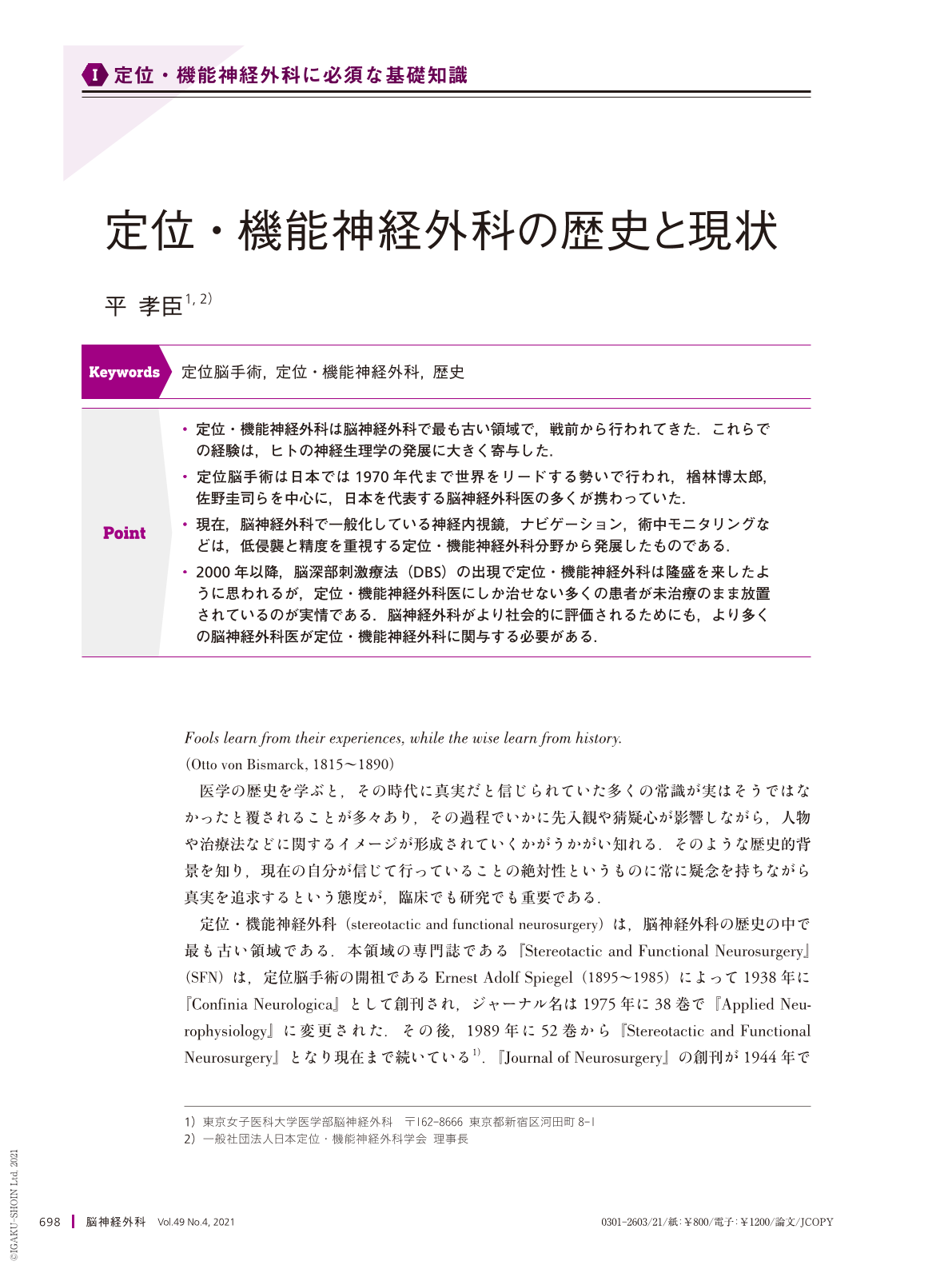Japanese
English
- 有料閲覧
- Abstract 文献概要
- 1ページ目 Look Inside
- 参考文献 Reference
Point
・定位・機能神経外科は脳神経外科で最も古い領域で,戦前から行われてきた.これらでの経験は,ヒトの神経生理学の発展に大きく寄与した.
・定位脳手術は日本では1970年代まで世界をリードする勢いで行われ,楢林博太郎,
佐野圭司らを中心に,日本を代表する脳神経外科医の多くが携わっていた.
・現在,脳神経外科で一般化している神経内視鏡,ナビゲーション,術中モニタリングなどは,低侵襲と精度を重視する定位・機能神経外科分野から発展したものである.
・2000年以降,脳深部刺激療法(DBS)の出現で定位・機能神経外科は隆盛を来したように思われるが,定位・機能神経外科医にしか治せない多くの患者が未治療のまま放置されているのが実情である.脳神経外科がより社会的に評価されるためにも,より多くの脳神経外科医が定位・機能神経外科に関与する必要がある.
Stereotactic and functional neurosurgery(SFN)is one of the oldest subspecialties of neurosurgery. In Japan, functional epilepsy surgery was performed in the Meiji era, even before World War Ⅱ, when general surgeons used to operate on patients with intractable cancer pain through open myelotomy or cordotomy. Knowledge gathered from such age-old procedures provided the basic understanding of neurophysiology and hence, functional neurosurgery used to be termed as “applied neurophysiology”. Human stereotactic surgery was introduced in 1947 and many Japanese neurosurgeons, particularly Hirotaro Narabayashi, Keiji Sano and Chihiro Ohye, contributed to the development of this field. Additionally, we should remember that common procedures of neurosurgery practiced today such as neuroendoscopy, navigation surgery, intraoperative monitoring, and the concept of exo-scope, which are less invasive and involves high accuracy, emerged from the field of SFN. Young doctors should learn from history and understand where we started from, where we at present, and where we are heading in the future.

Copyright © 2021, Igaku-Shoin Ltd. All rights reserved.


